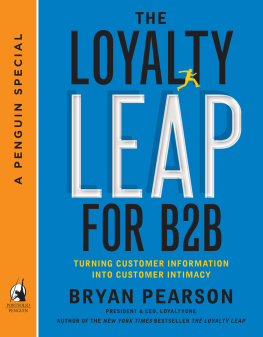Cox, D (1972) Regression models and life tables, Journal of the Royal Statistical Society
Cox, E (2011) Retail Analytics: The secret weapon , Wiley
Franks, W (2012) Taming the Big Data Tidal Wave , Wiley
Franks, W (2014) The Analytics Revolution , Wiley
Grigsby, M (2002) Modeling elasticity, Canadian Journal of Marketing Research , vol. 20 (2)
Grigsby, M (2015) Marketing Analytics: A practical guide to real marketing science , Kogan Page
Grigsby, M (2015) Analytic choices about pricing insights, Marketing Insights Magazine , April
Kennedy, P (1998) A Guide to Econometrics , MIT Press
Lewis, R and Dart, M (2010) The New Rules of Retail: Competing in the worlds toughest market place , St Martins Press
Marr, B (2015) Big Data: Using smart big data, analytics and metrics to make better decisions and improve performance , Wiley
ONeill, D, Gerst, S and Prom, S (2014) Business Insights: How to find and effectively communicate golden nuggets in retail data , Delta Publishing
Pearson, B (2012) The Loyalty Leap , Portfolio Press
Reichheld, FF (1996) The Loyalty Effect , Harvard Business School Press
Siegel, E (2013) Predictive Analytics , Wiley
Sorger, S (2013) Marketing Analytics: Strategic models and metrics , Admiral Press
Stephens, D (2013) The Retail Revival , Wiley
Tobin, J (1958) Estimation of relationships for limited dependent variables, Econometrica
Venkatesan, R, Farris, P and Wilcox, RT (2015) Cutting Edge Marketing Analytics , Pearson Education
Vriens, M (2012) The Insights Advantage: Knowing how to win , iUniverse, Inc
Weinstein, A (1994) Market Segmentation , Irwin Professional Publishing
01
Oh, so glad you dropped in. Thanks and Ill try to make it worth your while. In this Overview chapter well have a general introduction, which will help you know if youre in the right place or not. I know how youd hate to waste your time.
This is about analytics focussing on retail and retail-ish firms, so lets define each term. Theres a whole chapter on just what do I mean by retail but lets begin with the obvious: retail is an entity in the distribution chain, after manufacturing, after wholesale but before final consumption. That is, in traditional broad-based retail, I do not include manufacturers, I do not include wholesalers. They are a different ballgame, have different roles or purposes and face different (especially cost) pressures. The retail entity is that part of the distribution chain that takes from the wholesaler (who has taken goods from the manufacturer) and sells those goods to the final customer. These entities are mutually exclusive. (Well ignore vertically integrated firms.) Simple, right?
So Apple is a manufacturer, even though it has stores that sell to a final customer. Honda is a manufacturer even though it has dealers that repair automobiles for the final customer. Neither of these is a retailer by definition. They do not waltz the double-edged dance of the cost of supply and factor inputs that traditional retailers tango with. Think of Wal-Mart, that has factor inputs, and sells a broad array of products and brands in each product to the final customer. Wal-Mart can use this book.
By retail I also mean an organization that has stores, a market and a place where buyers and sellers meet. This is a location that distributes the manufactured goods (or services) to final customers. Yes, this can be an online-only location but that has other unique issues. The idea is that a retailer has control over a market (where buyers and sellers meet) that allows the final customer to experience the brand. There are grey areas of course but now you know what I mean by (strict) retail.
So what do I mean by retail-ish? This includes some of the grey areas but also those industries that are near retail. That is, hotels. They are not manufacturers/wholesalers and they have stores wherein the final customer can experience their brand. So this book will work for them. I would also include dining as a retail-ish industry. Restaurateurs buy food items from manufacturers (farmers) and wholesalers to re-combine into a product/service for final customers in a multitude of stores/restaurants. See?
Now, lets define analytics. Yes, it means something mathematical, more accurately, statistical. Analytics is that quantitative arm of (generally) marketing or operations that decreases the risk of making a wrong decision. It is fuelled by econometrics, marketing research, operations research, psychometrics, etc. Its basically where all the fun happens. This book will deal heavily with marketing science applications, and not much around financial/investment decisions. Note that this book should be viewed as a continuation (with some overlap) of my last book ( Marketing Analytics , Kogan Page, 2015).
This book is for the practitioner, or those who soon hope to be practitioners. There is a lot about data and a lot about strategy, but it is aimed at the analytic practitioner. The practitioner that works in and around retail and retail-ish industries will get the most use from it. Not in manufacturing, wholesaling or utilities. Financial services? Barely. Medical services? Not really. Think of Wal-Mart and all Wal-Mart-like places (JC Penney, Sears, Macys, Kohls, Shopko) and youre in the right ballpark. Specialty retailers (such as Michaels, Best Buy, Toys R Us, Gap) are also a good fit.
Good question. There are three primary reasons. First, retail is awash in data. Retail has all kinds of data, Big Data, little data, good data and easy data, more and more data. Data from POS systems, marcomm responses, overlay data, social media, marketing research, etc.
Also, retail is close to the customer. Retail listens to the customer, knows the customer. This means analytics get immediate feedback from projects and know instantly if something works. Or doesnt.
Lastly, retail tends to operate on thin margins and needs smart and intelligent decision-making to succeed. That means retail needs analytics more than other industries do.
My first job was in retail (shoes) and Ive worked at Gap as well. Ive been a consultant for many retail firms (including Famous Footwear, Best Buy, Fossil, Radio Shack, Shopko, Joanns Fabric and Craft, TGI Fridays and Papa Murphys).
My background has been entirely in (marketing) analytics. For nearly 30 (gulp) years. I have worked in CRM, direct/database marketing, decision analysis, forecasting, website analytics, marketing research and all the ancillary positions supporting those functions. So Ive been around. Ive been a practitioner. This book is the result of all I have learned and believe over these decades.
I have also taught college courses (graduate and undergraduate) and have great sympathy and passion for those learning to do analytics. I think I have evolved toward a (strong) point of view on several topics and can speak with authority, not from mere academia but from in-the-trenches experience. I know these things work because Ive seen them work. It is not always as the textbooks say and in the real world we have to use what works in practice.
Much like my last book, this one is around (typically marketing) questions. It is not necessarily designed to be read in sequence, except for the introductory chapters. Look at what you are trying to accomplish, look at what you are trying to answer, and find that chapter that will give analytic techniques in order to answer that question.
For example, How do I estimate demand? is an important question. Youre going to find out that there are two general kinds of analysis: dependent-type and interrelationship-type. The demand chapter () will argue that since demand (units) is what you are trying to understand and whose movement you are trying to explain (that is, demand DEPENDS on other things), therefore a dependent-type technique is whats needed. Ordinary linear regression will be advocated and discussion will be around how to use regression, what to look out for, why it works, how to display it in practice, etc. Then there will be a business case involving the use of ordinary regression in explaining the problem of demand.

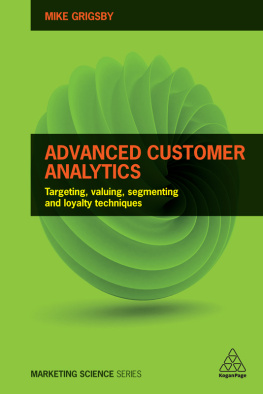
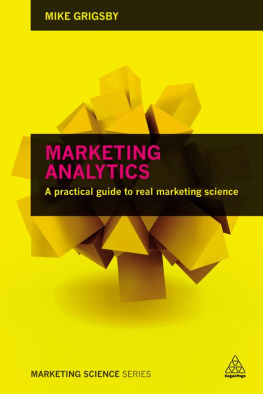

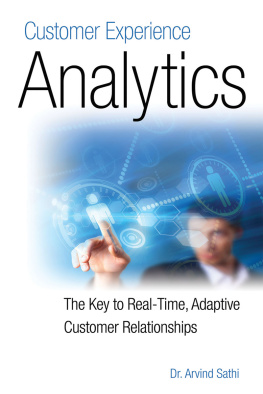

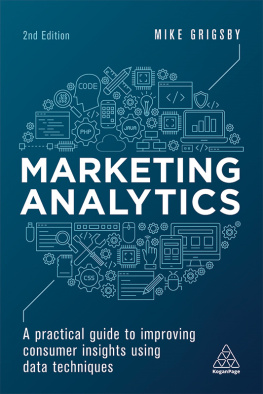
![Bart Baesens [Bart Baesens] - Analytics in a Big Data World: The Essential Guide to Data Science and its Applications](/uploads/posts/book/119608/thumbs/bart-baesens-bart-baesens-analytics-in-a-big.jpg)
